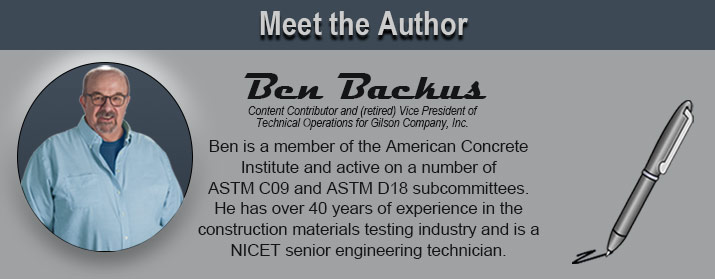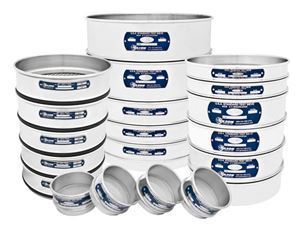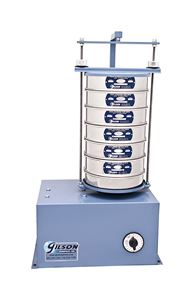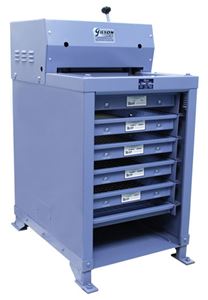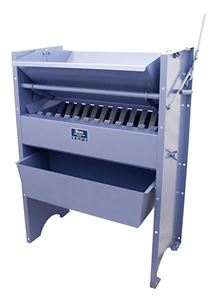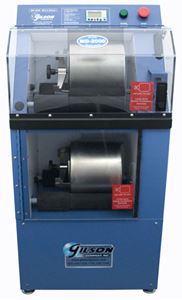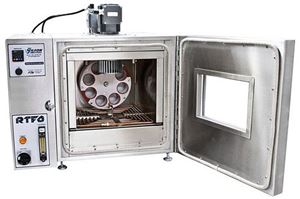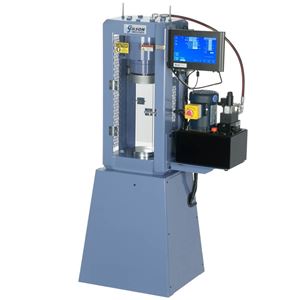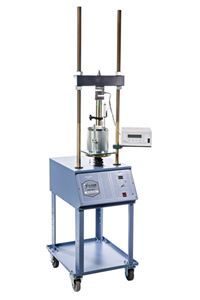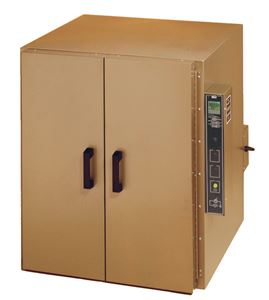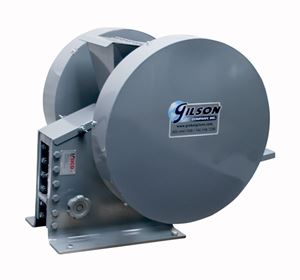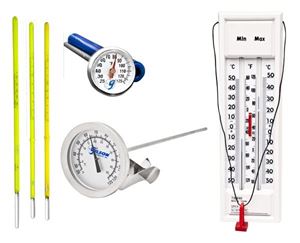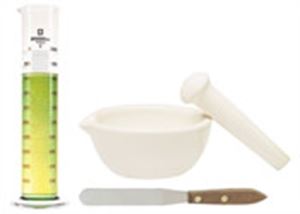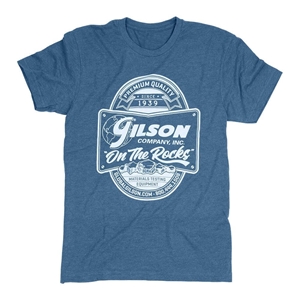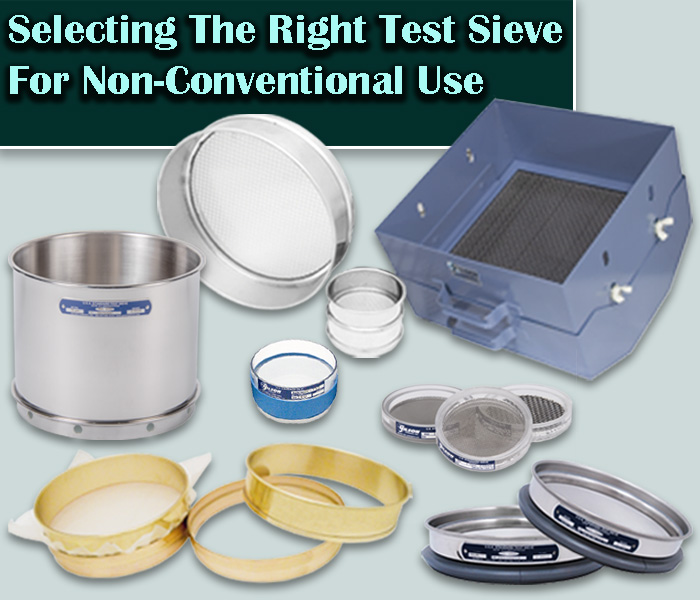
Sieving is the primary method for fraction separation, gradations, and particle size analysis for hundreds of different granular materials and powders like mineral soils, aggregates, powdered metals, dried food, pharmaceuticals, and more. All of these substances have unique properties and respond differently to different sieving actions. A surprising variety of sieve designs are built to test different materials more accurately or efficiently.
What Should I Know About Test Sieves?
One way to think of a “conventional” test sieve is one having a round brass or stainless-steel frame that nests with other sieves and mesh with an opening size from 4in to No. 635 (100mm to 20µm). We think of it as conventional because it is satisfactory for most test sieving methods and applications. Before we talk about non-conventional sieves, we need to understand the basic features important to all sieve types.
- Mesh Clearly, the most important feature of any test sieve is the opening sizes of its mesh. Published specifications from ASTM, ISO, AASHTO, and other standards organizations clearly state opening sizes and permissible tolerances. Knowing the requirements of the test method and the size range of the sample material will be your guide in selecting opening sizes.
As noted above, the most common sieve mesh materials are brass and stainless steel. Brass is used in applications where sparking is a potential hazard and previously was more economical than stainless steel. Nowadays, brass has become much more expensive because of the rising cost of copper. For longevity, wear resistance, low sample contamination, and economy, stainless steel is the winner when sieving most non-combustible materials.
Electroformed mesh is produced through the electrodeposition of nickel material on a stainless-steel grid substrate. The process results in precise and consistent square openings on a flat sieving surface. The electroformed mesh is expensive, and the finer sizes are fragile, but the ±1% to 2% opening tolerances make it unequaled for accuracy. This mesh is best suited for the precision sieving of fine powders.
Non-metallic meshes made from polyester or nylon are considerably cheaper than metal sieve cloth, but their wear resistance is comparatively quite low. Opening sizes are consistent but do not meet ASTM E11 or ISO 3310-1 specifications. They are a good option for disposable or non-standard testing applications, or to prevent cross-contamination of samples.
- Frame Materials of brass or stainless-steel have similar pros and cons to brass or stainless-steel sieve mesh. Brass frames are resistant to sparking and were formerly economical but have now risen in cost. Stainless steel holds the edge for durability, low contamination, and cost-effectiveness. Stainless steel’s resistance to deformation means sieve frames will hold their shape better for more accurate and repeatable operation over time.
Frames made from acrylic or polycarbonate plastics are less durable than metal but allow observation of particle action to fine-tune the input of agitation energy. They are also free of corrosion issues and less of a concern for sample contamination. Acrylic frames are machined for a close fit between stacked sieves, ensuring minimal loss of sample material.
- Frame Diameters determine the allowable sample volume of a test sieve, not the frame height or sample mass. For effective separation of fractions, each particle must be presented to multiple openings many times in different orientations during agitation. A large sample volume tested in a small frame means particles may not have sufficient opportunities to pass the mesh openings. A rule of thumb is that there should not be more than one to two layers of material remaining on the mesh surface at the completion of a test cycle.
The most popular frame diameters for conventional round test sieves are 8in and 12in (203 and 305mm) for ASTM E11 sieves, or 200mm and 300mm for ISO 3310-1 test sieves. (ASTM and ISO sieve frames will not nest together.) Available diameters range from 3in (76mm) to as large as 18in (457mm). ISO sieves have similar diameters.
- Frame Height not only impacts sieving accuracy and repeatability but also enhances production efficiency in your laboratory. Frame heights 1-1/2 to two times greater than the maximum particle size for the individual fraction allow enough vertical space for particle movement during the agitation for maximum tries at mesh openings. For coarse fractions, this usually means full-height sieves should be used. However, finer fractions allow the use of intermediate or half-height sieves and the opportunity for more sieves in a stack and reduced stack height for each test. That can translate to fewer test cycles and less time for a complete gradation. For wet wash sieving, greater frame height reduces sample loss during washing.
Why Should I Choose a Non-Conventional Sieve?
Non-conventional sieves come in many forms, but all have unique features that make them more functional, more accurate, or more economical for use with certain methods, applications, or materials. The charts below highlight the features of some non-conventional sieves and their uses.
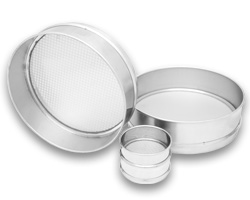 | ASTM Precision Electroformed Sieves |
| Properties |
|
| Test Standard(s) |
|
| Applications |
|
| Related Sieving Equipment | |
| Additional Information |
|
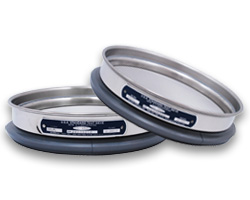 | Micron Air Jet Test Sieve |
| Properties |
|
| Test Standard(s) |
|
| Applications |
|
| Related Sieving Equipment |
|
| Additional Information |
|
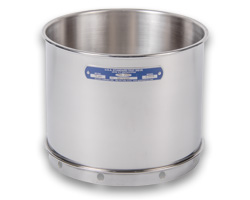 | Deep Frame Wet-Wash Sieves |
| Properties |
|
| Test Standard(s) |
|
| Applications |
|
| Related Sieving Equipment |
|
| Additional Information |
|
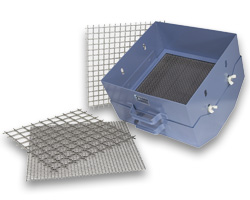 | Rocker Screen Set |
| Properties |
|
| Test Standard(s) |
|
| Applications |
|
| Related Sieving Equipment |
|
| Additional Information |
|
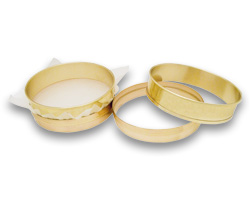 | Two-Part Replaceable Mesh Sieves |
| Properties |
|
| Test Standard(s) |
|
| Applications |
|
| Related Sieving Equipment |
|
| Additional Information |
|
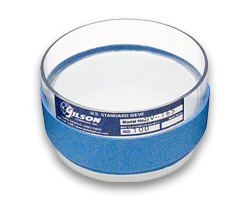 | 3in Non-Metallic Sieves |
| Properties |
|
| Test Standard(s) |
|
| Applications |
|
| Related Sieving Equipment |
|
| Additional Information |
|
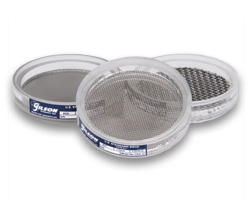 | 3in Acrylic Frame Test Sieves |
| Properties |
|
| Test Standard(s) |
|
| Applications |
|
| Related Sieving Equipment | |
| Additional Information |
|
Test Sieves are Not a One-Size-Fits-All Product
We hope this blog post has helped you understand the features of conventional vs non-conventional test sieves.
Gilson Is Here to Help
Contact our testing experts for more information or to discuss your testing application.
Testing Resources
Standard Test Methods, Specifications, and Practices
Individual test methods and specifications referenced in our product descriptions, blog articles, and videos are available for review or purchase from the professional organizations noted.
- ASTM International (American Society for Testing and Materials)
- AASHTO (American Association of State Highway and Transportation Officials)
- ACI (American Concrete Institute)
- State DOTs (Departments of Transportation)
- ISO (International Organization for Standardization)
- BS (British Standards)
- EN (European Standards)
